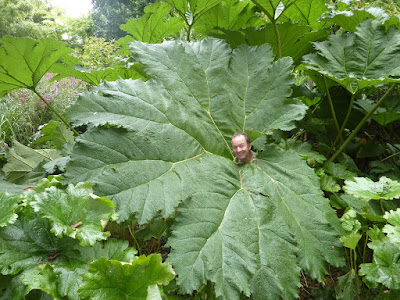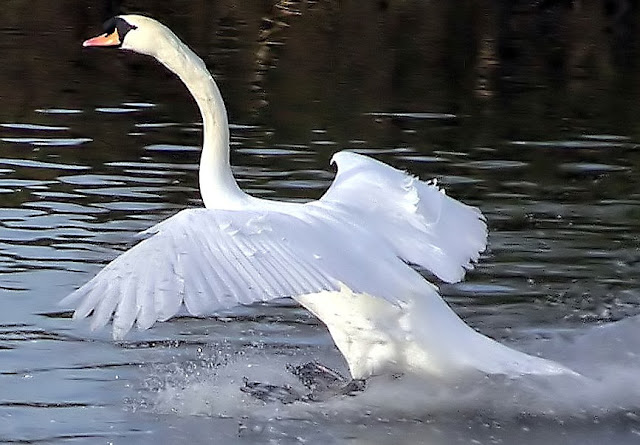 |
| Emperor penguins |
Penguins are a familiar site to us in both zoos and feature films, and while we know that they all (well mostly) originate from extremely cold environments, you may be surprised to find out that all is not as it seems when it come to penguin habitats.
For the most part, all penguin species live in the southern hemisphere so despite, there being two polar ice caps, only Antarctica (Earth's southernmost continent) is home to indigenous penguin species. There are no indigenous penguin species in the Arctic! Conversely polar bears are only found Arctic and not at all in Antarctica.
Despite the association with the frozen landscape of Antarctica, only two of the 18- 20 penguin species actually live on the Antarctic coastline. These are the Emperor penguin and the Adélie penguin. The reason why the number of penguin species is still in dispute is because some sources within the scientific community consider the white-flippered penguin to be a separate species, while others treat it as a subspecies of the little penguin. Similarly, others believe that the royal penguin is merely a color morph of the macaroni penguin. To confuse matter more the status of the rockhopper penguins is also unclear.
As a rule (actually known as Bergmann's rule) larger penguins inhabit colder regions, while smaller penguins are generally found in temperate or even tropical climates. This would explain in part why the emperor penguin is the world's largest penguin species.
All other species are distributed among Argentina, Australia, Chile, New Zealand, and South Africa. There is even one species, the Galápagos penguin, which unsurprisingly lives as far north as the Galápagos Islands. However this is only made possible by the cold, rich waters of the Antarctic Humboldt Current that flows around these islands.
Penguin distribution
 |
| Adelie Penguin - https://travelwild.com/ |
Adelie Penguin
The Ross Sea Region in Antarctica.
African Penguin
South western coast of Africa.
Chinstrap Penguin
Antarctica, South Sandwich Islands, South Georgia Island, South Orkneys, South Shetland, Bouvet, Balleny and Peter Islands.
Emperor Penguin
Antarctica
Fiordland Penguin
Fiordland coast and Stewart Island/Rakiura
Galapagos Penguin
The Galapagos Islands
 |
| Gentoo penguins |
Gentoo Penguin
The Falkland Islands, South Georgia, South Shetland, Kerguelen, Heard and Macquarie Islands and the Antarctic Peninsula.
Humboldt Penguin
Coastal Peru and Chile.
King Penguin
Subarctic islands, Tierra del Fuego and South Georgia Island.
Little Blue Penguin
Southern Australia, New Zealand, Chatham Islands and Tasmania. There are some reports that there is a small population in Chile.
 |
| Humboldt Penguin - http://ibc.lynxeds.com/ |
Magellanic Penguin
The southern cone of South America, coastal south Argentina and south Chile including the Falkland Islands.
Northern Little Penguin
New Zealand, however it only nests on Motunau Island and Banks Peninsula.
Northern Rockhopper Penguin
Northern Rockhoppers mostly breed on Tristan da Cunha and Gough Island in the south Atlantic Ocean, however there are a few small populations are found on St Paul Island and Amsterdam Island in the Indian Ocean.
Royal Penguin
Inhabits the waters surrounding Antarctica, but only breeds on Macquarie Island
 |
| Rockhopper penguin - http://ibc.lynxeds.com/ |
Snares Penguin
New Zealand on the Snares Islands.
Southern Rockhopper Penguin
The American Southern Rockhopper Penguin lives in the Falkland Islands and islands off of Argentina and southern Chile. The Indo-Pacific Southern Rockhopper Penguin lives on islands in the Indian and western Pacific oceans.
Yellow Eyed Penguin
New Zealand, though more specifically on the southeast coast of South Island, Stewart Island, Foveaux Strait, Auckland Islands and Campbell Islands.
For related articles click onto the following links:
EMPEROR PENGUIN FACTS
WHAT DO POLAR BEARS EAT?
WHERE DO PENGUINS LIVE?






































